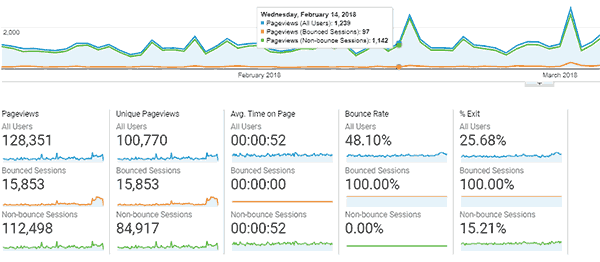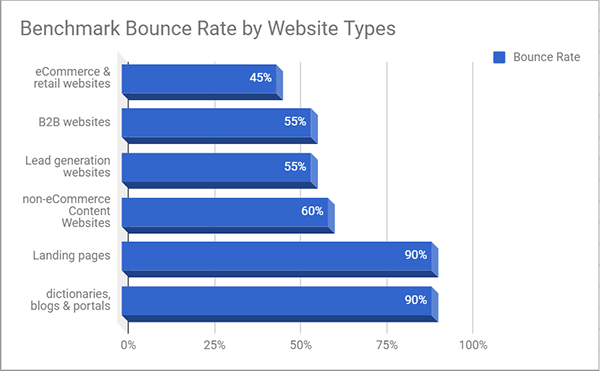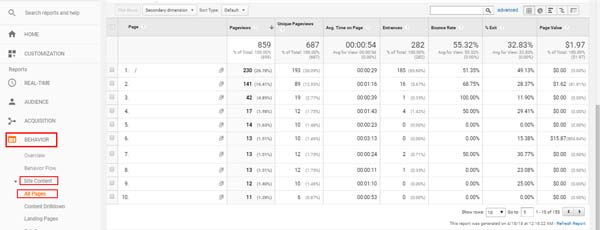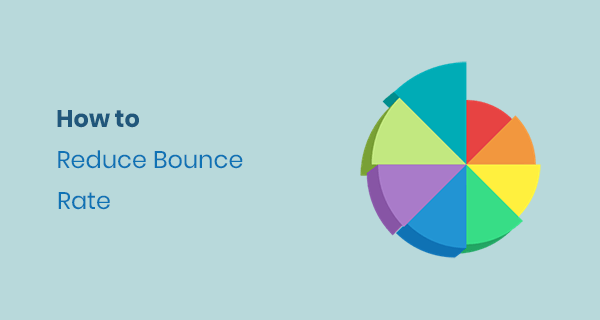Last Updated on by Azib Yaqoob
A bounce rate is a crucial metric which most webmasters ignore until they realize their conversion rate is too low. Reducing bounce rate on any website will give your readers more chance to explore your content, which will improve your brand trust and conversions.
If your website or blog has a low bounce rate, that’s a good sign that your content is engaging users to do more on site. Higher bounce rate does not always mean that your content sucks. Most educational websites which offer tutorials and guides have a higher bounce rate.
Let’s find out in this post what is bounce rate and how you can reduce it considerably using simple good UX practices.
What is Bounce rate?

Suppose a visitor lands on your site via search results, scroll down the content without clicking on any other link on that particular page and exits back to SERP, that is called a single session and will most likely be shown as a 100% bounce rate in Google Analytics tool.
Sometimes users have no intention to read further on a website. In those cases, it is totally acceptable to have a higher bounce rate. That’s the reason why Google doesn’t consider it as a ranking factor.
According to Google, A bounce is a single-page session on your site. In Analytics, a bounce is calculated specifically as a session that triggers only a single request to the Analytics server, such as when a user opens a single page on your site and then exits without triggering any other requests to the Analytics server during that session.
It is single-page sessions divided by the percentage of all sessions on your site in which users viewed only a single page, sending only a single request to the Analytics server.
A bounce rate event is triggered when a user enters another URL in the address bar, clicks on the back button in the browser, closes the active window or tab, stays inactive for about half an hour on the page or clicks on an outbound link.
As I discussed earlier, the bounce rate may vary from business to business. While a high bounce rate for an e-commerce site is somewhat alarming, a high bounce rate for a blog or an online dictionary is relatively normal. A visual depiction can give you a clear picture of the bounce rate for different types of businesses.

How to Check Your Bounce Rate using Google Analytics?
You can use Google Analytics to measure and examine your current bounce rate. You can check a lot of data such as bounce rate by referral, bounce rate by organic searches, bounce rate by social traffic, and more.
If you are not using Google Analytics then you can install it using Google Tag Manager, or by adding Google Analytics code inside HTML head and body tags.
You can check your website bounce rate by browsing these pages in your Google Analytics property:

1. In Audience > Overview report, you can find bounce rate for your overall website. You can also check the daily bounce rate, monthly bounce rate, and set a manual date to show the bounce rate for that specific period.

2. The Channels report can give you organic search bounce rate, referral bounce rate, social bounce rate, and direct visits bounce rate. You can check this report by going to Acquisition > All Traffic > Channels.

3. In Acquisition > All Traffic > Source/Medium, you can find individual source or medium bounce rate.

4. If you want to find out an individual page bounce rate, you can do that by going to Behavior > Site Content > All Pages. Here you can find out any individual page bounce rate.
How to reduce your bounce rate?
Now that we have got some insight into bounce rate phenomena, we can discuss how to reduce it.
Improve page load time. It is one of the crucial factors to consider when you want to reduce the bounce rate. A page which loads faster can lower your bounce rate. A page should completely load on user’s end in an average of under 2 seconds time. You can improve your website speed by using cache plugins on WordPress. Here is a step by step tutorial to configure W3 Total Cache settings.
Excessive Use of Pop-up Windows. While Pop-ups provide additional functionality to ad campaigns like announcing Webinars, lead generation, etc… But Pop-ups are generally an annoying factor from the user perspective as it sometimes distracts the user. Some pop-ups would be fine but using them extensively would definitely increase your bounce rate. Use them only where you find them necessary.
Harness Whitespace. White space refers to the empty space on your website. A website cluttered with menus, bars, and ad banners are big No to users. Harnessing the power of White space gives dominance to the actual content that users seek or CTAs (Call to Actions). Just take a look at Google’s homepage.
Website Structure. Sometimes a cluttered website with too many menu links, sidebar links can put off the user. Internal links are important for SEO and reducing bounce rate, but make sure that your website structure won’t get affected when creating internal links and menu links.
Simple and Skim-friendly text. Visitors don’t ‘read’ content on web pages, rather they skim through it. A heavily loaded unformatted text page will almost immediately bounce off a visitor. Try putting relatively large font for headings and clear text with short paragraphs. It helps the user to skim the content.
Using the Right Keywords. Your SEO strategy should be focused on optimizing for the right keywords related to your business. This attracts the relevant organic traffic via SERPs and increases the chance of a conversion.
Don’t get overwhelmed with optimizing just for bounce rate. The primary SEO goal should be improving the user experience. The more user-friendly and relevant your content is, the higher the organic traffic and lower the bounce rate. If you are using WordPress then you can check out my latest WordPress SEO guide to improve your traffic.

